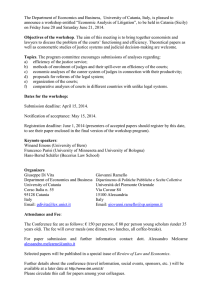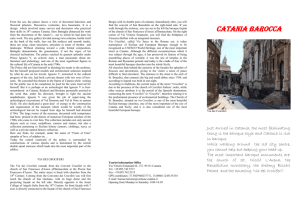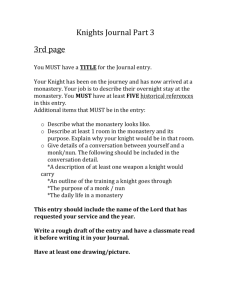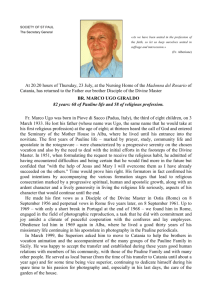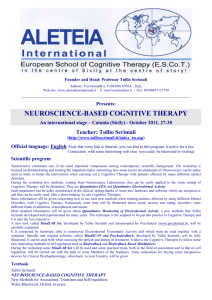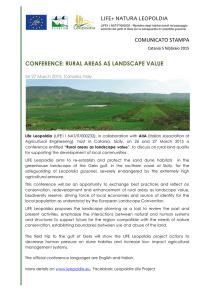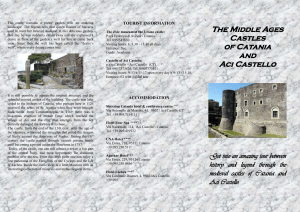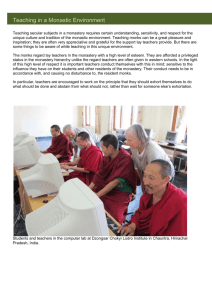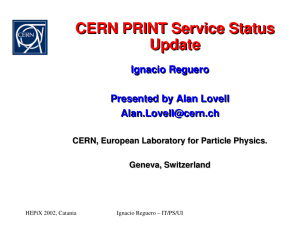The Benedictine Monastery of Catania - IIS Ramacca
advertisement
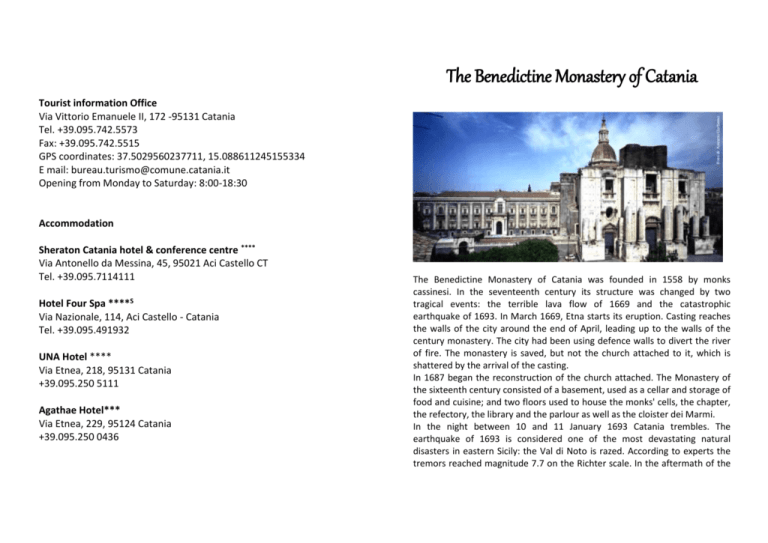
The Benedictine Monastery of Catania Tourist information Office Via Vittorio Emanuele II, 172 -95131 Catania Tel. +39.095.742.5573 Fax: +39.095.742.5515 GPS coordinates: 37.5029560237711, 15.088611245155334 E mail: bureau.turismo@comune.catania.it Opening from Monday to Saturday: 8:00-18:30 Accommodation Sheraton Catania hotel & conference centre **** Via Antonello da Messina, 45, 95021 Aci Castello CT Tel. +39.095.7114111 Hotel Four Spa ****S Via Nazionale, 114, Aci Castello - Catania Tel. +39.095.491932 UNA Hotel **** Via Etnea, 218, 95131 Catania +39.095.250 5111 Agathae Hotel*** Via Etnea, 229, 95124 Catania +39.095.250 0436 The Benedictine Monastery of Catania was founded in 1558 by monks cassinesi. In the seventeenth century its structure was changed by two tragical events: the terrible lava flow of 1669 and the catastrophic earthquake of 1693. In March 1669, Etna starts its eruption. Casting reaches the walls of the city around the end of April, leading up to the walls of the century monastery. The city had been using defence walls to divert the river of fire. The monastery is saved, but not the church attached to it, which is shattered by the arrival of the casting. In 1687 began the reconstruction of the church attached. The Monastery of the sixteenth century consisted of a basement, used as a cellar and storage of food and cuisine; and two floors used to house the monks' cells, the chapter, the refectory, the library and the parlour as well as the cloister dei Marmi. In the night between 10 and 11 January 1693 Catania trembles. The earthquake of 1693 is considered one of the most devastating natural disasters in eastern Sicily: the Val di Noto is razed. According to experts the tremors reached magnitude 7.7 on the Richter scale. In the aftermath of the earthquake the city is destroyed and most of the people of Catania is buried under the rubble. Monastery of the sixteenth century remains intact basement and the first floor. The cloister remain erected 14 columns other fall down and break. Since 1702 began the reconstruction and the Monastery is repopulated by monks from other monasteries. Larger than the plant primeval: the Cloister dei Marmi is added to the Cloister of Levante, with the garden and the Caffeaos in eclectic style, and the north with the spaces to day life and collective life of the monks: the library, the kitchens, the 'wing of the novitiate, the refectory, the chorus of night. It exploits the lava bench to achieve the two roof gardens, the Botanical Gardens and the garden of the Novices. The church of St. Nicholas Arena, adjacent to the new monastic complex remains unfinished in the main façade. Larger, decorated, altered, the monastery became one of the largest monasteries in Europe, second, between those of the Benedictine order, only to that of Mafra in Portugal. Starting from 1868 most of the spaces werw rearranged for "civil" uses. These were mainly schools, including the most famous was the Regio Istituto Carlo Gemmellaro, but is also allocated to the Military Barracks and the Astrophysical Observatory with the laboratory of Meteorology and Geodynamics. The new uses caused a series of profound changes that the Monastery suffered despite its recognition, the Unification of Italy, as a National Monument. Erased most of the frescoes, divided the hallways, roofs, loft, introduced accretions to make room for offices, gyms, latrines. The Botanical Garden of almost 5 acres is divided up to house the pavilions of the new hospital dedicated to the king of Italy, Vittorio Emanuele. The Church of St. Nicholas who lives his last moment of glory with the Rector Della Marra, appointed personally by Cardinal Dusmet, becomes good of worship then in use of the City of Catania. The sacristy, also built by Vaccarini, welcomes Shrine dedicated to the fallen of the two wars. Only the beautiful monastic library is spared. The book collection of the monks, which includes gorgeous herbaria, sixteenth and illuminated bibles, plus the collections of other orders abolished and private. “The Public United Libraries Ursino Recupero” today are made up of three main areas: the reading room built inside the museum of the Benedictines, the circular conference room, and the sumptuous Sala Vaccarini. In 1977 as part of the redevelopment of the historic center of the city, the city of Catania gives the Benedictine Monastery at the University of Catania, which destines him to the seat of the historical Faculty of Humanities. Since 2002 it becomes a World Heritage Site that UNESCO identifies as a representative of the late baroque of south-eastern Sicily.
